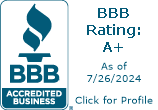We all know that smart home technologies are widely available, affordable and effective, but can they also save you money? Yes, and in ways you may not have guessed. Here are 4 reasons to opt into smart home and automation technologies.
Smart Thermostats
Investing in a smart thermostat is a smart, cost-saving decision for a number of reasons. Heating and cooling account for nearly half of a home’s energy costs, so getting that under control can provide substantial savings. Smart thermostats can do this by learning your usage and preferences and adjust accordingly so you are never heating and cooling unnecessarily. You can also use it to turn on your heating or cooling from afar, so you can adjust the temperature just before you get home, rather than leaving it on all day so that you can come home to a comfortable home.
Smart Lighting
Smart lighting lets you upgrade your space with features such as motion sensors, dimmers, and app access, but even better -these features save money on your utility bill.
- Using LED lighting, dimmers save money on a 1:1 ratio so dimming 50% reduces energy usage by 50%.
- Motion sensors ensure that lights go off when not in use and on when you need them.
- App Control provides a way to turn off and on lights from anywhere, so you can still return home to a well-lit home without having to leave them on while away.
Remote Power Management
We’d probably be quite surprised if we could add up all of the wasted energy we use and measure it against our actual needful usage. Leaving lights, fans, electronics, appliances, and things like curling irons is a huge and costly waste. Energy consumption by televisions and other electronics that are in the “always on” mode (but look off) is also a big contributor of wasted energy. With smart home technology, you can control all of these things from an app on your smartphone or tablet, and precisely manage your energy use.
Pro Tip: Energy consumption by televisions and other electronics that are in the “always on” mode (but look off) is also a big contributor of wasted energy.
Increased Efficiency and Productivity
It may seem like a small thing, but when all of the peripheral things are working efficiently, automatically, and smartly then you can, too. By using these things as a tool you can keep yourself on track, on time, and motivated. For example, using lighting and temperature controls can help you wake up on time, while enabled appliances are already at work so that you can get to work more quickly. You can also eliminate distractions with smart technologies like video doorbells so that you can accomplish your tasks without interruptions. All of these things ultimately make and save you money.
Adopting smart technologies for a truly connected home not only puts a lot of cool features and conveniences in your hand, it keeps money in your pocket.
About Security Instrument
Security Instrument is Delaware’s largest full-service independently owned security firm, serving Delaware, Pennsylvania, New Jersey, and Maryland with safety, security, and smart home technologies.

